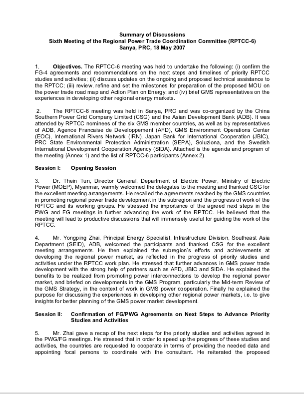
Special (12th) Meeting of the Regional Power Trade Coordination Committee (RPTCC-12-A)
The Special 12th RPTCC meeting (RPTCC-12-A) was held mainly to continue discussions on the inter-governmental MOU to establish the Regional Power Coordination Center (RPCC), which will oversee the evolution of the GMS power market toward a more open, but appropriately regulated competitive market.

